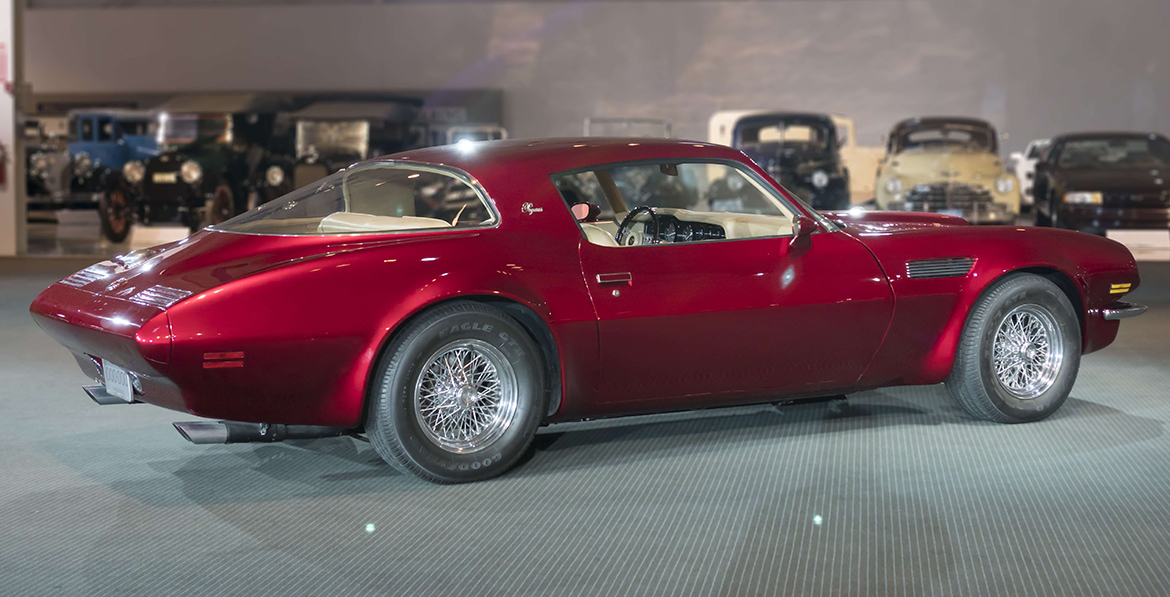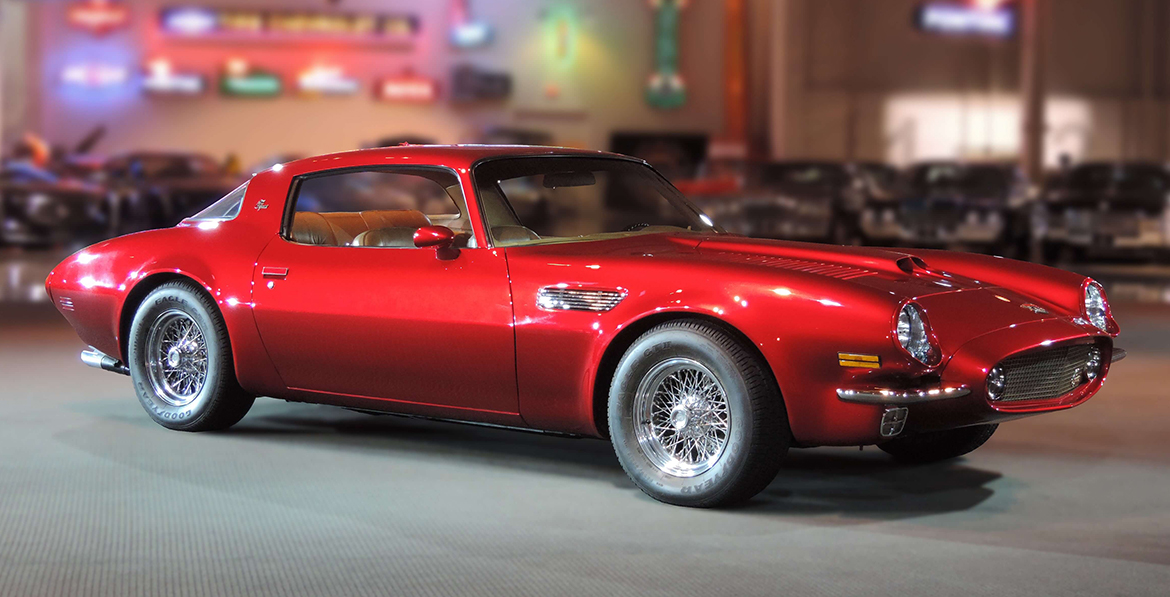Media | Articles
A mythical combination: The Pontiac Pegasus has a Ferrari heartbeat
For most of its existence, Pontiac wasn’t known for wild styling exercises and often seemed to live in Chevrolet’s shadow. Yet in 1971, Pontiac went off the deep end and added some pasta to its meatball of a firebird by transplanting a Ferrari V-12 into a Firebird body. This unholy mashup occur requires an explanation, and a long one at that. So let’s dive right in.
This isn’t a production car. The Pegasus was never meant to be more than a one-off design exercise. GM Design Vice President William L. Mitchell, better known as Bill, was in charge of the design concept study utilizing a 1970 Firebird as the base. While it seems a close coincidence that Krazy Glue was introduced the same year as this wild mashup, this car is more than just parts tacked together.
The hand behind the mashup was Jerry Palmer, a stylist at Chevrolet. With a goal of freshening up the Camaro, Palmer created a four-by-two-foot sketch combining the Camaro with a 1958 Ferrari 250 Testa Rossa. Bill Mitchell liked the design, but carried it down the hall to Pontiac where it got off the paper and into the metal.
Pontiac further massaged the design, using it as a test bed for design elements that would appear on the Firebird in the coming years. The wraparound rear glass can be seen on 1975 models, and the narrowed tail can be seen on the 1973 LeMans and Grand Am.
Marketplace
Buy and sell classics with confidence


But the look is only a small portion of this design car’s story. The Ferrari V-12 tucked under the hood is sourced from a 365 GTB/4 Daytona. The 4.4-liter, four-cam V-12 was rated at 352 horsepower, which compared pretty close to the Ram Air series of engines. That comparison, combined with Bill Mitchell’s love for low effort driving experiences, might explain why the car was initially assembled by mating the Ferrari 12 to a GM Turbo 350 transmission.
The powerband of the peaky V-12 didn’t agree with the slushy three-speed gearbox, and the car went back under the knife and received the five-speed manual, and also get an upgrade to a V-12 sourced from a 365 GTC/4 to ensure the car would drive as Mitchell thought it should. The gauges and exhaust were also pulled from the Ferrari and fitted to this hybrid.
The original engine now resides tucked away in a back corner of the GM Design facility, still sporting its Luigi Chinetti-marked filters and hoses, possibly waiting for a new home, or to return to its original home.

Of the history of this car, by far the most impressive part is that the car was driven regularly by Bill Mitchell. In fact, he had such a strong appreciation for the car that he took it with him upon his retirement. The car was involved in an accident under his tutelage when it hit the bridge at Road America in Elkhart Lake, Wisconsin. Whether the bridge was named Mitchell Bridge before or after the accident is unclear. Pegasus only returned to GM when he passed away in 1988.
The original design featured a mother-lode of gold to accent the deep candy red paint. Interestingly, Ed Wellburn revisited the car and removed much of the gold striping and trim in 2012. While it seems sacrilege to change a historic car like Pegasus, he was head of GM Design at the time and GM Design owned the car, meaning he was well within his rights to make such changes.
Now this wild experiment of a car is a showpiece that travels to shows and events when not tucked in the GM Heritage collection. Awesome cars such as this piece of history rotate through the Hagerty main office in Traverse City, Michigan on a monthly basis, so be sure to drop by and check out what’s new whenever you’re nearby.














I thought Enzo gave gm the engine cause he was pissed at ford